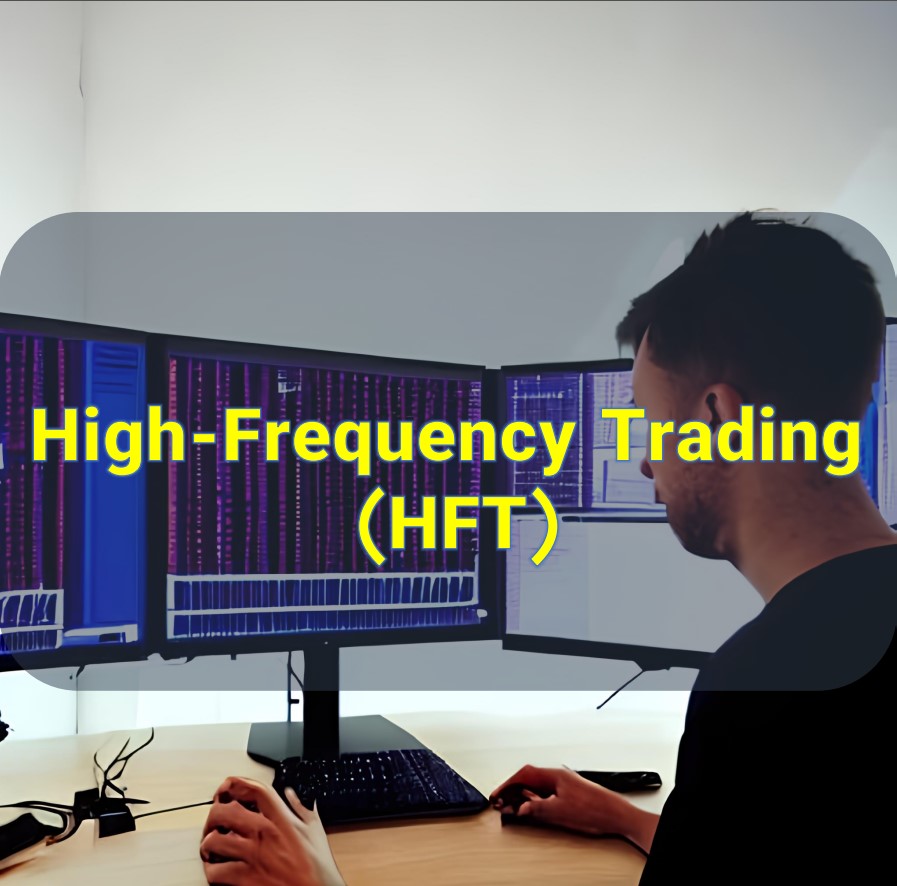Profitable trading positions – The profitability of trading positions depends on various factors, including market conditions, individual risk tolerance, investment goals, and strategies. It is essential to conduct thorough research, analyze market trends, and consult with a financial advisor or professional before making any investment decisions.
Trend Trading
This strategy involves identifying and following the prevailing trends in the market. Traders attempt to profit by entering positions in the direction of the trend, buying during uptrends and selling during downtrends.
Breakout Trading
Traders using this strategy aim to take advantage of price breakouts from key levels of support or resistance. They look for significant price movements and enter positions as the price breaks out of these levels, expecting continued momentum in the same direction.
Range Trading
This strategy involves identifying well-defined levels of support and resistance and entering positions when the price is near these boundaries. Traders anticipate that the price will remain within the range and profit from repeated price bounces between support and resistance.
Swing Trading
Swing traders aim to capture short-to-medium-term price movements within a broader trend. They identify overbought or oversold conditions and take positions in anticipation of price reversals or corrections.
Fundamental Analysis
Traders who employ fundamental analysis assess the underlying factors that drive the value of an asset, such as financial statements, economic indicators, news, and geopolitical events. They use this information to determine the intrinsic value of an asset and make trading decisions based on the perceived discrepancy between the intrinsic value and the current market price.
Remember, trading involves risks, and it is essential to develop a well-defined trading plan, implement risk management strategies, and stay updated with the latest market developments.
Scalping
Scalping is a short-term trading strategy that aims to profit from small price movements. Scalpers execute multiple trades throughout the day, taking advantage of bid-ask spreads and liquidity. This strategy requires quick decision-making, tight risk management, and the use of advanced trading tools.
Contrarian Trading
Contrarian traders take positions opposite to the prevailing market sentiment. They believe that market participants often overreact to news or events, leading to temporary mispricing of assets. By going against the crowd, contrarian traders attempt to profit from price reversals when the market sentiment eventually shifts.
Carry Trading
Carry trading involves borrowing in a low-interest-rate currency and using the proceeds to invest in a higher-yielding currency or asset. Traders aim to profit from the interest rate differential between the two currencies. This strategy requires careful consideration of interest rate differentials, currency risks, and market conditions.
Options Trading
Options provide traders with the right but not the obligation to buy (call option) or sell (put option) an asset at a specific price within a predetermined period. Options trading strategies can be used to profit from various market conditions, including directional movements, volatility changes, and range-bound markets. However, options trading can be complex and carries additional risks.
Pair Trading
Pair trading involves simultaneously taking long and short positions in two correlated assets. Traders identify pairs of assets that historically exhibit a high correlation and take advantage of temporary price divergences between them. This strategy aims to profit from the convergence of prices back to their historical relationship.
It is important to note that trading involves risks, and no strategy guarantees profitability. Traders should carefully assess their risk tolerance, conduct thorough research, and consider their own investment goals and preferences before implementing any trading strategy.
Momentum Trading
Momentum traders focus on assets that are showing strong upward or downward price movements. They aim to capitalize on the momentum by entering positions in the direction of the prevailing trend. This strategy relies on the belief that assets that have been performing well will continue to do so in the short term.
Mean Reversion
Mean reversion traders believe that prices tend to move back towards their average or mean after deviating from it. They look for assets that have experienced significant price movements away from their average and take positions in anticipation of the price reverting back to the mean.
Event-Driven Trading
Event-driven traders capitalize on market opportunities created by specific events, such as earnings announcements, economic releases, or corporate actions like mergers and acquisitions. They analyze the potential impact of these events on the market and take positions accordingly.
Arbitrage
Arbitrage involves taking advantage of price discrepancies between different markets or assets. Traders simultaneously buy and sell assets in different markets to profit from the price differential. This strategy requires quick execution and access to multiple markets.
Technical Analysis
Technical analysis involves studying historical price and volume data to identify patterns, trends, and indicators that can help predict future price movements. Traders who use technical analysis rely on chart patterns, trendlines, moving averages, and various technical indicators to make trading decisions.
Remember, trading is a dynamic and ever-changing endeavor. It is crucial to adapt your strategies to changing market conditions, stay informed about economic and geopolitical events, and continually refine your trading approach. Additionally, risk management and discipline are essential for successful trading. Always conduct thorough research and consider seeking advice from professionals or financial advisors before making any investment decisions.
Position Trading
Position traders take a longer-term approach to trading and hold positions for weeks, months, or even years. They aim to capture larger price movements and trends in the market. Position trading typically involves fundamental analysis and a focus on broader market trends.
Algorithmic Trading
Algorithmic trading involves using computer programs and algorithms to automate trading decisions. Traders develop algorithms that execute trades based on predefined rules and criteria, such as price movements, technical indicators, or news events. Algorithmic trading can provide speed and efficiency in executing trades.
High-Frequency Trading (HFT)
High-frequency traders use sophisticated algorithms and powerful computers to execute a large number of trades within very short timeframes. HFT aims to profit from small price discrepancies and market inefficiencies that can arise within fractions of a second.
Options Spreads
Options spreads involve simultaneously buying and selling multiple options contracts to create a spread position. Spread strategies, such as the bull call spread, bear put spread, or iron condor, can help manage risk and potentially increase the probability of profit by combining different options positions.
Forex Carry Trade
The forex carry trade involves borrowing in a low-yielding currency and investing in a higher-yielding currency to take advantage of interest rate differentials. Traders seek to profit from both the exchange rate appreciation and the interest rate differential between the two currencies.
Seasonal Trading
Seasonal traders look for patterns and trends in asset prices that recur at specific times of the year. They analyze historical data to identify seasonal patterns and take positions based on the expected price movements during certain periods.
Dividend Investing
Dividend investing involves focusing on stocks or other assets that pay regular dividends. Traders aim to generate income from the dividends received in addition to potential capital appreciation. This strategy often appeals to long-term investors seeking stable income streams.
Sector Rotation
Sector rotation involves periodically shifting investments among different sectors of the economy based on their relative strength. Traders analyze the performance of various sectors and adjust their portfolio allocations accordingly to capitalize on sectors that are expected to outperform.
Earnings Momentum
Earnings momentum traders focus on companies that consistently beat earnings expectations or show strong earnings growth. They aim to capitalize on the positive momentum generated by strong earnings reports, which can potentially drive stock prices higher.
Social Trading
Social trading platforms allow traders to observe and copy the trades of successful traders. This strategy enables less experienced traders to learn from and replicate the trading strategies of more experienced traders, leveraging their knowledge and expertise.
Options Volatility Trading
Volatility traders take advantage of fluctuations in implied or historical volatility of options. They may use strategies such as straddles, strangles, or volatility spreads to profit from changes in volatility levels, regardless of the market’s direction.
Risk Reversal
A risk reversal strategy involves combining options positions to create a synthetic long or short position while adjusting the risk profile. This strategy is used when a trader wants to take a directional bias while minimizing the upfront cost or protecting against adverse price movements.
Quantitative Trading
Quantitative traders use mathematical models and statistical analysis to make trading decisions. They develop and implement algorithms that analyze vast amounts of data to identify trading opportunities based on predefined rules and criteria.
Cryptocurrency Trading
Cryptocurrency trading involves buying and selling digital assets such as Bitcoin, Ethereum, or other cryptocurrencies. Traders analyze price charts, market trends, and other indicators specific to the crypto market to make trading decisions.
Impact Investing
Impact investors focus on investments that generate a positive social or environmental impact in addition to financial returns. Traders in impact investing seek to align their investment strategies with causes or issues they care about, such as sustainability, renewable energy, or social justice.
Event-Based Trading
Event-based traders seek to profit from specific events, such as product launches, regulatory decisions, or earnings announcements, that have the potential to significantly impact the price of a particular asset. Traders analyze the event and its potential implications to take advantage of price movements that occur as a result.
Pair Options Trading
Pair options trading involves trading options contracts on the relative performance of two underlying assets. Traders can take positions based on the expected outperformance or underperformance of one asset compared to another. Pair options trading allows for a range of trading strategies, including directional, market-neutral, or volatility-based approaches.
Statistical Arbitrage
Statistical arbitrage is a strategy that seeks to profit from pricing inefficiencies identified through statistical models. Traders use quantitative techniques to identify relationships and patterns in historical data, seeking to take advantage of temporary mispricings between related assets.
Swing Trading
Swing trading is a short-to-medium-term strategy where traders aim to capture price swings within an established trend. Traders typically hold positions for a few days to a few weeks, taking advantage of price retracements and reversals within the overall trend.
Pattern Recognition
Pattern recognition involves identifying and trading based on recurring patterns in price charts, such as triangles, head and shoulders, or double bottoms. Traders look for specific formations that historically indicate potential future price movements, using them as signals for their trading decisions.
Seasonality Trading
Seasonality trading focuses on exploiting predictable patterns and trends that occur during certain times of the year. Traders analyze historical data to identify seasonal trends and recurring patterns, enabling them to position themselves accordingly to take advantage of these trends.
Quantitative Momentum
Quantitative momentum trading involves selecting assets based on their historical price performance and momentum indicators. Traders identify assets that have shown strong price appreciation over a specified period and expect the trend to continue in the short to medium term.
Long/Short Equity
Long/short equity trading involves taking long positions in assets expected to rise in value and short positions in assets expected to decline. Traders aim to generate returns by profiting from the performance differential between the long and short positions.
Trend Reversal
Trend reversal traders aim to identify potential turning points in market trends. They analyze technical indicators, price patterns, and other signals to anticipate when a prevailing trend may be reaching its end and a reversal is likely to occur.
Global Macro Trading
Global macro traders focus on macroeconomic factors, such as interest rates, geopolitical events, and economic indicators, to make trading decisions. They analyze global trends and allocate their investments across various asset classes and markets based on their macroeconomic outlook.
trading involves risks, and it is essential to carefully assess and understand the risks associated with any trading strategy. Additionally, it’s recommended to conduct thorough research, use risk management techniques, and consider consulting with professionals or financial advisors before making any trading decisions.
Mean Reversion Trading
Mean reversion traders look for assets that have deviated significantly from their average price or historical norms. They anticipate that the price will revert back to its mean, and they take positions based on this expectation. This strategy involves identifying overbought or oversold conditions in the market.
Pyramiding
Pyramiding is a strategy where traders add to their positions as the trade moves in their favor. Instead of entering the entire position at once, traders start with a smaller position and gradually increase their exposure as the trade becomes more profitable. This approach allows traders to maximize their gains while managing risk.
Breakout Pullback
Breakout pullback traders focus on identifying breakouts from key levels of support or resistance and then wait for a pullback to enter their positions. They seek to confirm the breakout and enter at a favorable price after the initial surge in price. This strategy aims to take advantage of the continuation of the breakout move.
Options Straddle
A straddle involves simultaneously buying a call option and a put option with the same strike price and expiration date. Traders use this strategy when they expect a significant price movement but are unsure about the direction. The straddle allows them to profit from volatility, regardless of whether the price goes up or down.
Long-Term Investing
Long-term investing involves holding assets for an extended period, typically years or even decades. Traders who adopt this strategy focus on fundamental analysis, company fundamentals, and long-term trends rather than short-term price fluctuations. They aim to benefit from the potential growth and value appreciation of the assets over time.
Options Writing
Options writing, also known as selling options, involves taking on the role of an option seller. Traders collect premiums by selling options contracts and assume the obligation to buy or sell the underlying asset if the option is exercised. This strategy allows traders to generate income by taking advantage of time decay and market conditions.
E-mini Trading
E-mini trading refers to trading futures contracts that are smaller in size compared to standard futures contracts. E-minis provide access to various asset classes, including stock indices, commodities, and currencies. Traders can take advantage of intraday price movements and leverage while managing risk.
Merger Arbitrage
Merger arbitrage involves taking positions in stocks of companies involved in mergers and acquisitions. Traders aim to profit from the price discrepancy between the target company’s stock price and the offer price during the merger process. This strategy requires analysis of deal terms, regulatory approvals, and timing considerations.
Short Selling
Short selling is a strategy where traders sell borrowed shares with the expectation that the price will decline. They aim to buy back the shares at a lower price to return them to the lender, thereby profiting from the price difference. Short selling allows traders to profit from declining markets or specific stocks.
Diversification
Diversification involves spreading investments across different asset classes, sectors, or geographic regions. Traders diversify their portfolio to reduce risk and potentially improve returns by not relying heavily on a single asset or market. This strategy aims to achieve a balance between risk and reward.
Remember, trading involves risks, and no strategy guarantees success. It’s important to thoroughly research and understand the strategies you choose, practice risk management, and consider your personal financial situation and goals before implementing any trading strategy.







